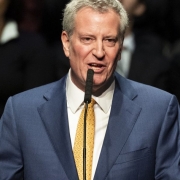Move over, Anna Wintour. New York City regulators now have the final say over what constitutes a fashion faux pas. This week the city’s Commission on Human Rights announced a sweeping settlement with Prada over some of its designs, and the terms threaten artistic expression across the industry.
The brouhaha began in December 2018 when Chinyere Ezie, a lawyer at a social-justice nonprofit, discovered Prada’s Pradamalia collection. Prada described its bag charms, figurines and other trinkets as “a new family of mysterious tiny creatures that are one part biological, one part technological, all parts Prada.” Ms. Ezie instead saw “blackface imagery” and “Sambo like imagery,” she wrote in a Facebook post that went viral.
Within days, Prada pulled the merchandise and said it “never had the intention of offending anyone and we abhor all forms of racism and racist imagery.” Ms. Ezie still filed a complaint. In this week’s settlement Prada denies engaging in unlawful discriminatory practices. Yet the agreement gives New York City bureaucrats broad influence over the fashion house’s day-to-day operations, including its creative process, training and hiring.
Prada now must appoint a diversity and inclusion officer who can review all of “Prada’s designs before they are sold, advertised or promoted in any way in the United States.” The diversity cop will ensure that “Prada’s activities, including, without limitation, its production, advertising, and business activities, are conducted in a racially equitable manner.”
Commissioner Carmelyn Malalis said this “really never became about a free speech issue” because Prada was “immediately very cooperative” with regulators. But it’s only a matter of time before the inclusion czar nixes creative content over a political sin.
Prada also must create an advisory council to help the company “stay abreast of global social issues related to race, culture and diversity” and “create meaningful and cooperative partnerships with social justice organizations, including organizations who advance equity for marginalized communities, including communities of color.”
The settlement requires Prada to provide the human-rights commission with “a report describing the demographic make-up of Prada’s staff at all levels” and “evidence that it has taken meaningful steps towards increasing the number of people from protected classes under-represented in the fashion industry, including people of color, among all levels of its staff.”
Ms. Malalis says that hiring “decision-making still falls squarely within Prada,” but “if anything, we are helping them with input as to who could be good people in order to influence their decisions or what questions they may not be thinking themselves, what profiles they may not be thinking of themselves.” These will be offers Prada can’t refuse.
Prada said in a statement that it is “gratified to have been able to collaborate with the New York City Commission on Human Rights on a mutually agreeable conclusion.” No doubt it wants all this to go away, but the settlement sends a chilling signal that the social-justice left can now use government to dictate and censor business designs and artistic choices.






